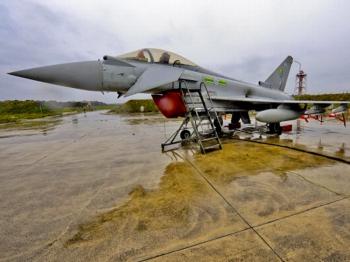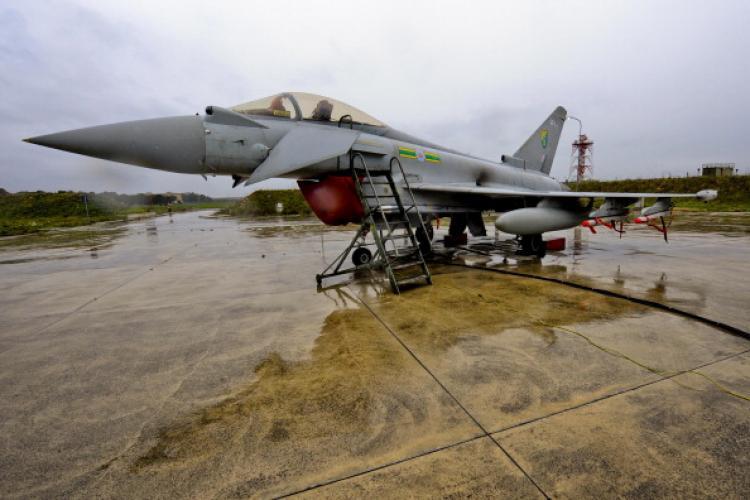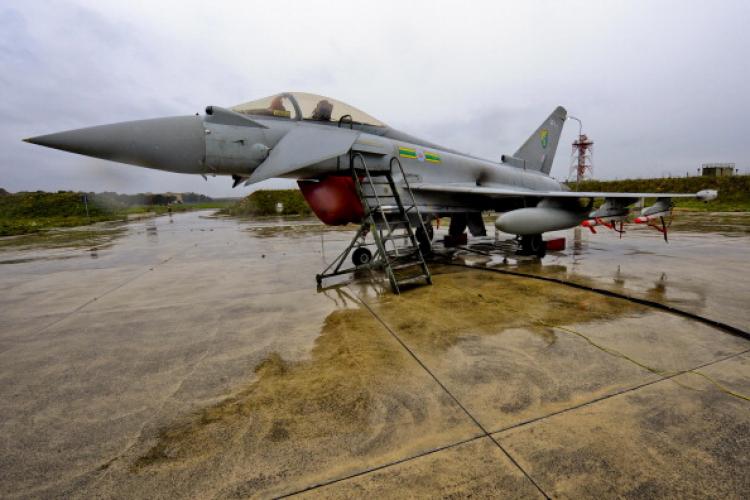Only eight out of the UK’s 48 Typhoon pilots are qualified to take part in ground-attack operations such as those ongoing in Libya, according to a report by the House of Commons Committee of Public Accounts published on April 15th.
“Problems with the availability of spares mean that Typhoons are not flying the hours required and the Department is forced to cannibalise parts from other aircraft to maximise the number of aircraft available on a given day. As a result, it is not fully training all its pilots,” states the report.
“In addition, the Department had to ground five pilots temporarily in 2010. The problem is likely to be exacerbated as the number of Typhoons in-service increases and they are used in a wider range of operational roles.”
The report also criticised the Ministry of Defence (MoD) for spending £119 million on ground attack upgrades that are not being used.
“In 2004, the Department decided to withdraw its fleet of ground attack Jaguar aircraft early and to spend £119 million to install ground attack upgrades on early Typhoons to cover the resulting capability gap.
“However, in 2009 the Department decided to retire the air defence Tornado F3 aircraft early to save costs and re-prioritised Typhoon in air defence roles. This has meant that Typhoon’s ground attack capability is not being used.”
Margaret Hodge MP, who chaired the Committee of Public Accounts, called the history of the Typhoon aircraft “yet another example of over-optimism, bad planning, and an unacceptably high bill for the taxpayer”.
The UK originally planned to buy 232 Typhoons but will now buy only 160 and will retire the 53 oldest aircraft by 2019, leaving a long-term fleet of 107 aircraft.
“The MoD is now buying 30 per cent fewer Typhoon fighter aircraft than originally planned, the cost of the project is now expected to be £3.5 billion more than was originally approved and if we take all expenditure into account, the cost of each aircraft has increased by 75 per cent,” said Mrs Hodge in a statement.
The report chastised the MoD for not including research and development costs as well as the cost of capital into its calculations when it worked out that each Typhoon would cost £73 million. When those factors are taken into account, it turns out each Typhoon costs £126 million.
The Committee also told the MoD it should oblige contractors to be more flexible in the case of premature obsolescence. “Major defence procurement contracts are often lengthy and therefore carry an inherent risk that elements become obsolete before projects are completed and operational,” states the report.
In response to the report, Defence Secretary Dr Liam Fox was quoted on the MoD website as saying: “After years of financial mismanagement and project delays under the previous government, the Typhoon project has been turned around. The project is finally under control and back on track. The PAC Report recognises that the MoD and industry have worked to resolve spares issues and performance targets are now being met.”
The Typhoon, originally named Eurofighter, was conceived in the 1980s during the Cold War as an air superiority fighter. The UK is collaborating with Germany, Italy, and Spain on the project. France left the project in 1985 to develop its own Rafale multi-role aircraft.
The Typhoon is manufactured by two consortia. Eurofighter Jagdflugzeug, based in Germany, coordinates the design, production, and upgrade of the Eurofighter Typhoon. It includes Alenia Aeronautica (Italy) BAE Systems (UK), EADS CASA (Spain), and EADS Deutschland (Germany). EUROJET Turbo, also based in Germany, is the management company responsible for the Typhoon’s engines. It is made up of Avio (Italy), ITP (Spain), MTU Aero Engines (Germany), and Rolls-Royce (UK).
Austria and Saudi Arabia have also agreed to buy Typhoon aircraft. The Typhoon’s sale to Saudi Arabia made headlines in 2006 when the UK’s Serious Fraud Office halted an investigation into deals between Saudi Arabia and BAE Systems after threats by the Saudis to halt anti-terrorism cooperation and cancel the Typhoon deal.






